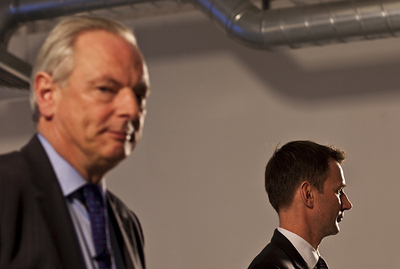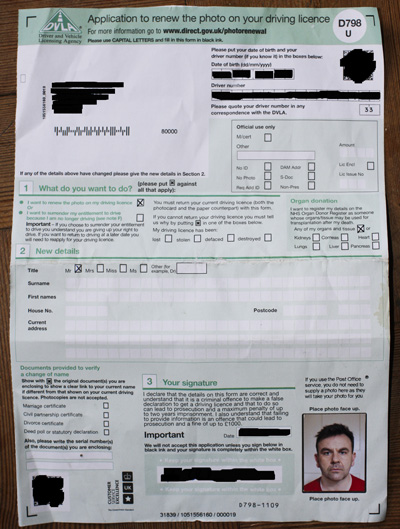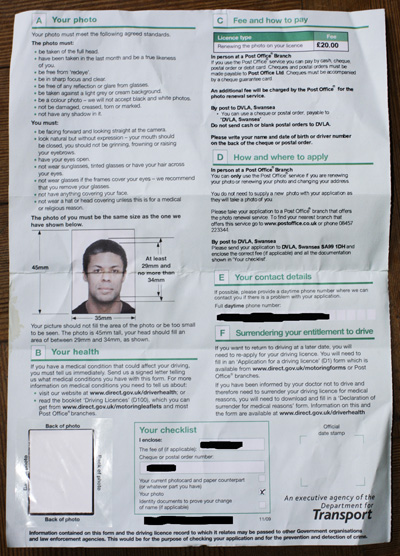Dec 6, 2011 2
Bad beyond compare

A policy so incredibly inhuman that it stops you in your tracks.
How could this ever have been dreamed up? Who thought this would ever be acceptable? How on earth did a blank-faced politician manage to express it in cold, bare words?
This was pretty much my reaction (and that of many, I know) to this story about cancer patients on chemotherapy being forced into more stringent checking of their eligility for sickness benefits.
Particularly that last question: how on earth was such barbarity actually expressed?
That press release from Macmillan, linking to a petition, was getting a LOT of attention.
So I had a search around for some wider perspectives. And found…well, not much more, really.
A few blog posts are springing up to denounce its atrocity, but there’s precious little in terms of any deeper analysis of this policy. Or, reading in more detail, not policy, but something that is being “consulted on” and “could”…
OK, so it’s a “could” story. I approach anything containing the phrase “that could” in its first two lines with a bit of caution. (And then look for a range of robust, related sources.) Generally, “it could” = “it might, but it probably won’t, though WHOAH LOOK AT THIS HEADLINE”.
Make no mistake: I am hugely supportive of the aims of those campaigning for better treatment for people in such a terrible position. I completely understand Macmillan’s wish to remove even the burden of testing from a whole swathe of people in an enormously challenging personal situation.
But I can also at least appreciate the existence of an argument that says: if some people are on a particular drug regime, but are symptom-free or want to work, should they automatically be signed up to receive benefits?
Contemplating the fact that any issue involving a large number of people involves tricky edge-cases (and false positives and negatives) doesn’t automatically make me a card-carrying Tory benefit slasher, m’kay? (And I honestly don’t need a ton of comments in testimony to how grim chemo is; believe me, I’ve been pretty close to it myself in the last two years.)
But what I’m really interested in is the rational debate here. With both sides putting forth their attempts at cogent argument, the better to inform us all of what’s really going on.
So what did the government actually say? In its response there are references to the prior involvement of Macmillan in this review. Involvement which clearly did not end well. Here are the relevant paragraphs from that PDF:
31. Professor Harrington asked Macmillan Cancer Support…to assess whether there were improvements that could be made to the provisions for people who were undergoing treatment for cancer. During July 2011, the Department received evidence from Macmillan which was endorsed by Professor Harrington.
32. The Department accepts the evidence presented by Macmillan that the effects of oral chemotherapy can be as debilitating as other types of chemotherapy.
The evidence also shows that certain types of radiotherapy and in particular of combined chemo-irradiation can be equally debilitating. As a result of the
evidence supplied by Macmillan, the Department has developed detailed proposals for changing the way we assess individuals being treated for cancer.
33. If introduced, these proposals would increase the number of individuals being treated for cancer going into the Support Group. They would also reduce the
number of face-to-face assessments for people being treated for cancer as most assessments could be done on a paper basis, based on evidence presented by a GP or treating healthcare professional.
34. We had hoped to introduce these proposals in April 2012. However, following detailed discussions with Macmillan, we have been unable to secure their
support to our proposals which were based on their evidence.
35. As a result, the Department now intends to seek a wider range of views on the proposed changes through an informal consultation. We wish to gather views
of interested stakeholders, including individuals affected by cancer, their families and carers, employers, healthcare practitioners and cancer specialists
as well as other representative groups. We will launch this consultation during December 2011.
This needs some decoding, clearly. Perhaps Macmillan put forward their evidence about effects, along with their proposal for a block exemption from any ESA assessment, and this latter part was rejected? One has to read between the lines, though. And “going into the Support Group [undefined]”? I mean, it sounds nice, but does it mean “added to the numbers of those needing to be formally assessed”? I guess it does. But should any reader have to guess? UPDATE (1544 121206) Support Group as defined here is actually jargon for where you get put when you’ve been assessed as eligible for benefit, and are NOT required to work (but can if you want to). Which, taken as read (and how else should one take it?) makes this all even more puzzling.
So there a few language games being played here, and perhaps more to the story than meets the eye. You’ll note the Macmillan press release opens with the careful wording: “…Department of Work and Pensions decision to propose changes”. The word “decision” echoes more loudly than “propose”, of course.
DWP hasn’t made a decision. It has made proposals. See what they did there?
But this post is not about the arguments for and against the policy, merely to acknowledge that they probably both exist (whether they’re particularly strong, or not).
This is an observation on communications.
If someone, especially someone approaching or undergoing chemotherapy (or close to someone who is), sees this press release, there’ll be some FUD (Fear, Uncertainty & Doubt). That’s probably part of its intention. The piece is getting its points in quickly to influence a debate that’s about to take place in this consultation period. That’s what good lobbying and campaigning does. And more power to it.
But when you see FUD, maybe you want to see a broader perspective to reassure you. FUD is great for campaigning, but it has its downsides.
Will you find anything on the DWP or Department of Health websites by way of response that people might actually understand? Anything other than more impenetrable PDFs?
I can’t.
So the government are clearly losing the heart-and-minds battle on this one already. Losing? They’ve already lost. They didn’t even show up for the game.
And what were the government so keen on abolishing, almost as their first act after the election?
All those unnecessary communications posts.
Oh, how my heart bleeds for them.








